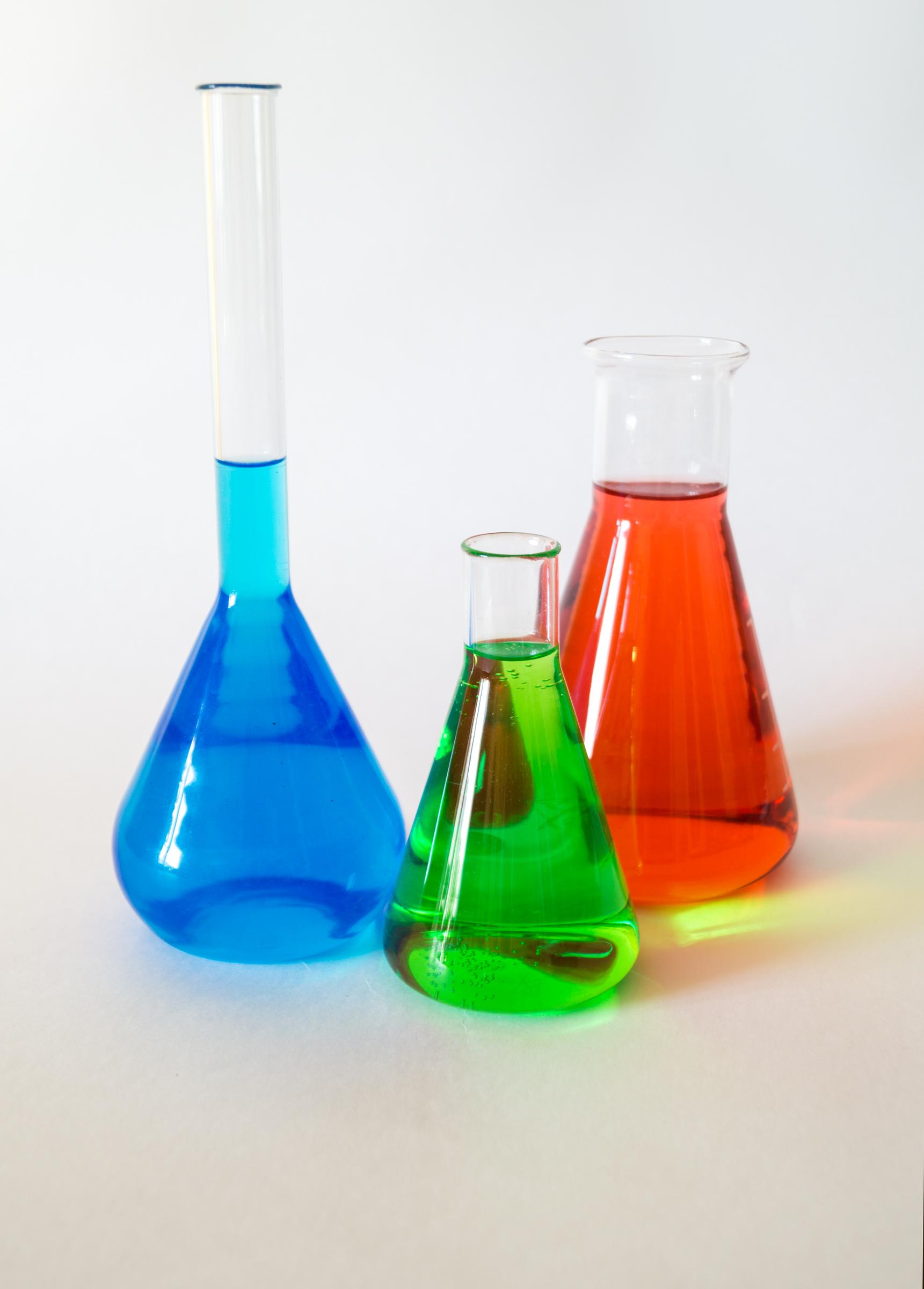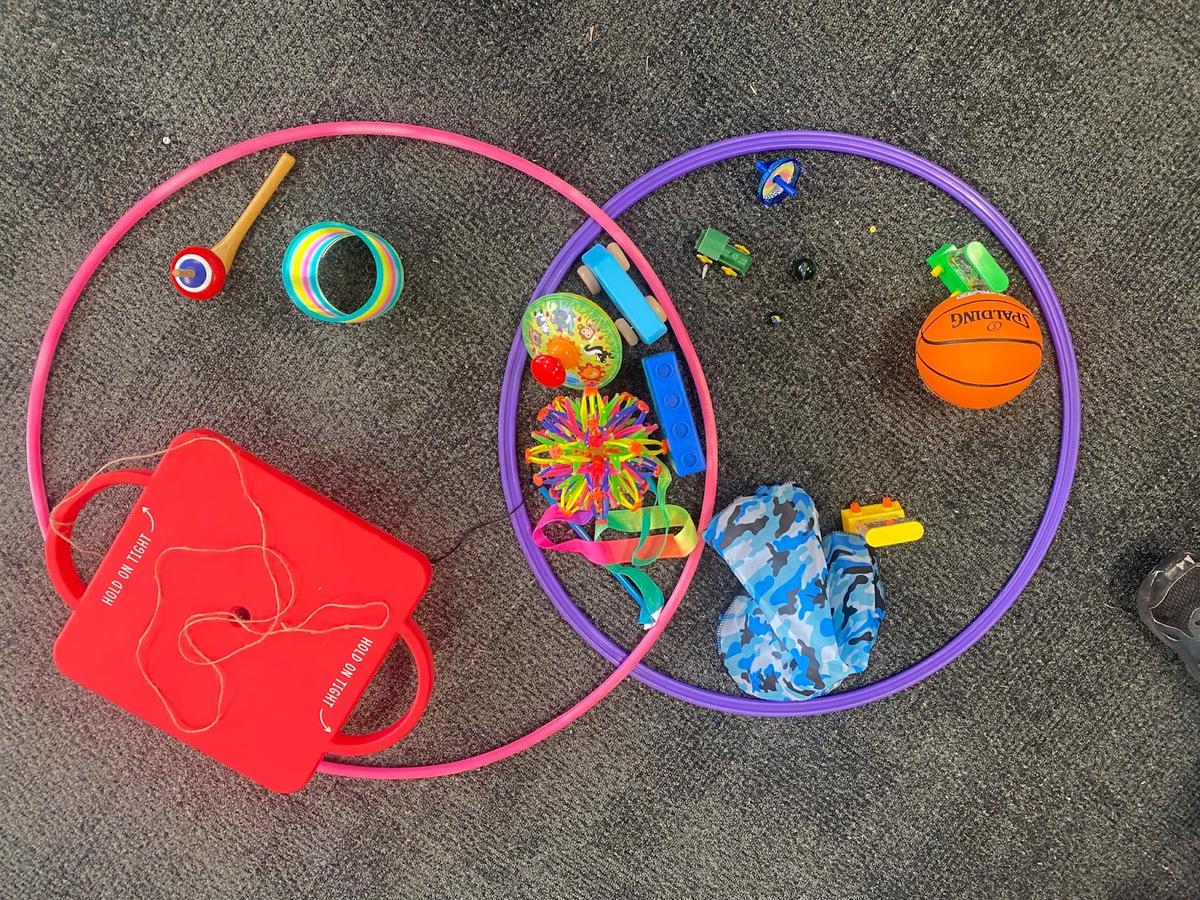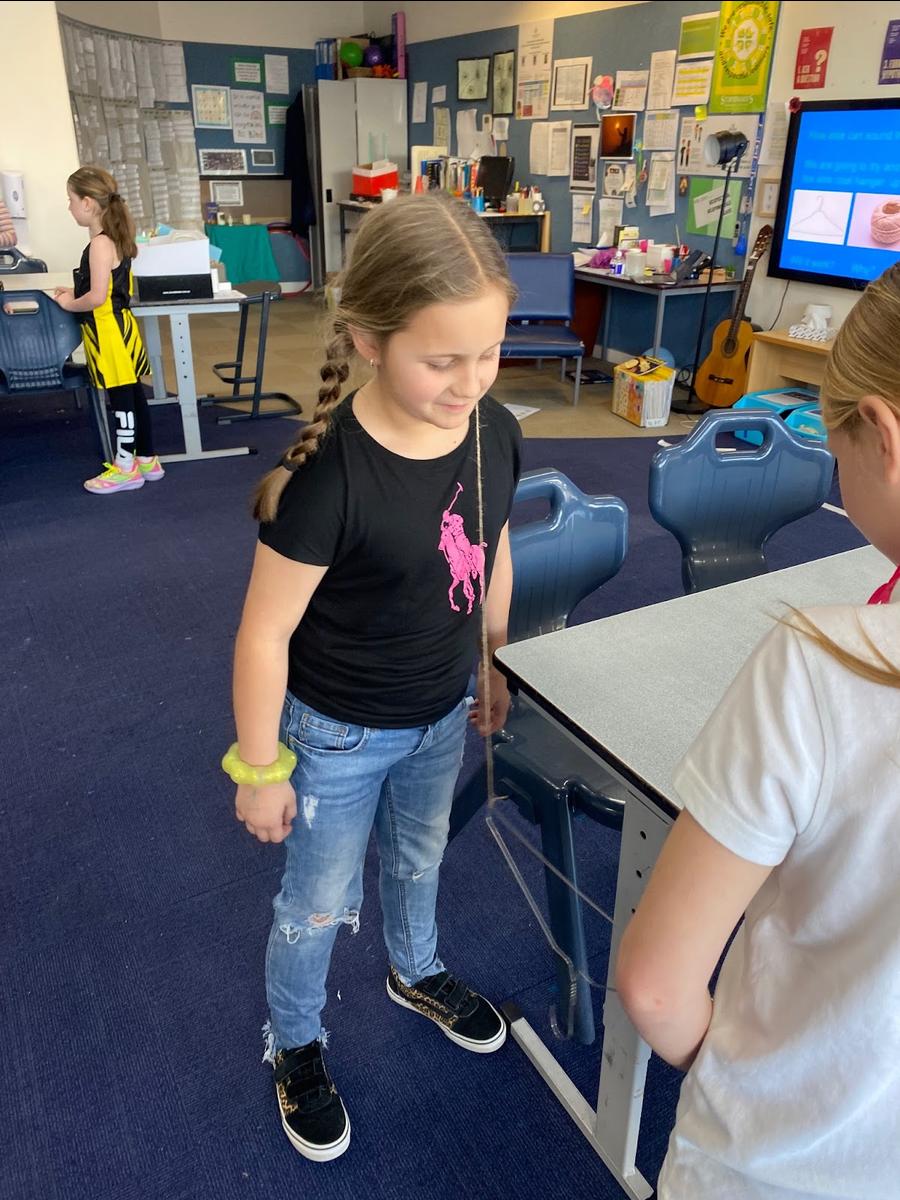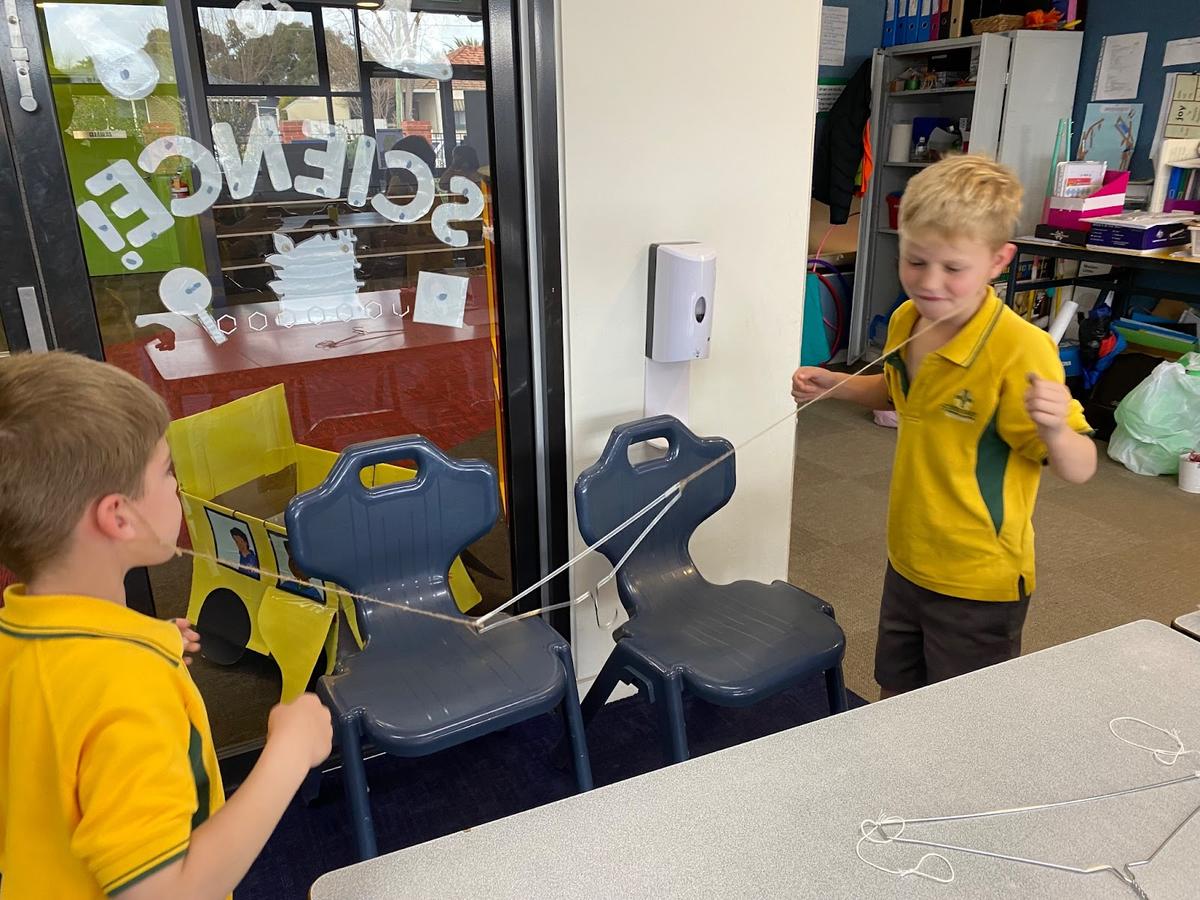Science

Foundation classes have continued to explore force and motion with our Unit “On the Move” We have been exploring how our toys move, and how our bodies move.
Our toys usually require some form of push or pull to move, while our body can move in many different directions and uses several body parts.
We have also explored which of our toys require a push, which require a pull and which require or work with both push and pull.
To demonstrate this we created a physical venn diagram buy classifying some toys into these categories.
Grade 1/2 have been ‘Looking and Listening’ with great amazement in the science room as we investigate how we see and hear.
We have discovered that without light we cannot see, as we actually see when light reaches an object and reflects the image of the object to our eyes.
We have also discovered that sounds travel through the air in waves, and that these sound waves create vibrations which travel through our ear canal > ear drum > the small bones in out ears > cochlea > nerves and finally to our brains!
To demonstrate how these vibrations can travel, we made ‘coat hanger earrings’!
The students came up with these sentences to describe what we did and what we learned -
“We listen to sound vibrating along the string when we tapped the coat hanger on the table.
When we tapped the coathanger harder, the vibrations are bigger and the sound are louder and stronger”
Grade 3/4 have continued to investigate Heat!
What are heat sources? A heat source is something that can produce its own heat, and is either electrical, kinetic, chemical or from the sun.
We have also begun looking at how heat is transferred, and what we call objects that can move heat from one thing to another - these are conductors of heat.
This week the children are planning and creating posters to warn others of the dangers of some heat conductors such as metal spoons, frypans, and even the hot sand at the beach! Watch in the next newsletter for some WARNING posters!
Grade 5/6 have been looking at light and how it travels.
We have investigated what is light, how it travels (in straight lines), reflection, absorption and transmission of light and how we can manipulate light to go around corners using objects with flat shiny surfaces such as mirrors.
Later in the term, we are hoping to use this new knowledge to make periscopes.





